

 |
LATVIA
LATVIJA |
27 August
Mysterious Tribes and Latvian Caribbean
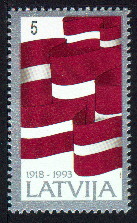 RIGA
Below the clouds, a long but narrow beach strip began to emerge.
More than one hour after take-off from Stockholm, the SAS Airbus had reached
the Latvian coast. Next to the beach were little wooden houses and
pine forests. Some people on the beach, but it must be getting steadily
colder this time of the year. This is probably Jurmala, once the
favourite playground of retiring Soviet military officers. No longer.
Newly independent Latvia now imposes visas on Russians and unspoken government
policy encourages Russians to leave this country.
RIGA
Below the clouds, a long but narrow beach strip began to emerge.
More than one hour after take-off from Stockholm, the SAS Airbus had reached
the Latvian coast. Next to the beach were little wooden houses and
pine forests. Some people on the beach, but it must be getting steadily
colder this time of the year. This is probably Jurmala, once the
favourite playground of retiring Soviet military officers. No longer.
Newly independent Latvia now imposes visas on Russians and unspoken government
policy encourages Russians to leave this country.
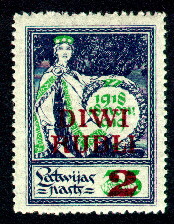 It
was a cloudy day. Lots of mists. Just like the mysterious origins
of the Latvians, shrouded in time and myths. Who are they ?
The Latvians, members of a branch of the Indo-European language group known
as the Baltic, first arrived in their present territory more than 2000
years ago. During the times of the Great Migration, the Latvians
were hardly an obscure group. The Baltic group comprised of other
tribes such as the Lithuanians, (Old) Prussians, Galinds and Jatvings.
However, with the exception of the Lithuanians, one by one, the Baltic
tribes were wiped out or assimilated into larger neighbouring ones.
By the way, the Prussian referred here are not the Germans associated with
Bismarck and Wilhem, but another Baltic tribe living in today's eastern
Germany and northern Poland, but totally wiped out by the eastwards expanding
Germans. The Lithuanians managed to unite under their charismatic
grand dukes, formed an union with Poland and even set up an empire rivaled
in size only by the growing Russian state. In northern Latvia, an
Finno-Ugric tribe called the Livonians or Livs settled but eventually assimilated
by the Latvians over the century. The Latvians, however, were never
united, and were quickly conquered by the German crusaders, also known
as the Teutonic knights, or Order of the Brothers of the Sword.
It
was a cloudy day. Lots of mists. Just like the mysterious origins
of the Latvians, shrouded in time and myths. Who are they ?
The Latvians, members of a branch of the Indo-European language group known
as the Baltic, first arrived in their present territory more than 2000
years ago. During the times of the Great Migration, the Latvians
were hardly an obscure group. The Baltic group comprised of other
tribes such as the Lithuanians, (Old) Prussians, Galinds and Jatvings.
However, with the exception of the Lithuanians, one by one, the Baltic
tribes were wiped out or assimilated into larger neighbouring ones.
By the way, the Prussian referred here are not the Germans associated with
Bismarck and Wilhem, but another Baltic tribe living in today's eastern
Germany and northern Poland, but totally wiped out by the eastwards expanding
Germans. The Lithuanians managed to unite under their charismatic
grand dukes, formed an union with Poland and even set up an empire rivaled
in size only by the growing Russian state. In northern Latvia, an
Finno-Ugric tribe called the Livonians or Livs settled but eventually assimilated
by the Latvians over the century. The Latvians, however, were never
united, and were quickly conquered by the German crusaders, also known
as the Teutonic knights, or Order of the Brothers of the Sword.
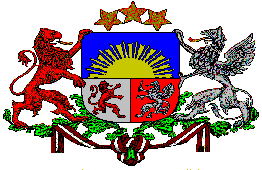 In
1201, the Germans under warrior-cleric Bishop Albert founded Riga, today
Latvia's capital, at the mouth of the Daugava River and this soon became
an important commercial centre and Hanseatic city. The Germans lost
their political power as more powerful neighbours such as the Polish-Lithuanians,
Swedes and Russians dropped by, but their commercial and geopolitical instinct
served them well. They quickly switched allegiance to the new masters
and their feudal and economic privileges and dominance over local Latvian
serfs were preserved. An interesting fact of note: During the rule
of the Polish-Lithuanian Commonwealth, the German ruled Duchy of Courland
in what is today Latvia's Kurzeme and Zemgale provinces once ruled the
Caribbean island of Tobago between 1641 and 1658 before the Dutch defeated
the Courlanders. Imagine if Courland retained control of Tobago –
a Latvian-speaking island paradise in the Caribbean ?
In
1201, the Germans under warrior-cleric Bishop Albert founded Riga, today
Latvia's capital, at the mouth of the Daugava River and this soon became
an important commercial centre and Hanseatic city. The Germans lost
their political power as more powerful neighbours such as the Polish-Lithuanians,
Swedes and Russians dropped by, but their commercial and geopolitical instinct
served them well. They quickly switched allegiance to the new masters
and their feudal and economic privileges and dominance over local Latvian
serfs were preserved. An interesting fact of note: During the rule
of the Polish-Lithuanian Commonwealth, the German ruled Duchy of Courland
in what is today Latvia's Kurzeme and Zemgale provinces once ruled the
Caribbean island of Tobago between 1641 and 1658 before the Dutch defeated
the Courlanders. Imagine if Courland retained control of Tobago –
a Latvian-speaking island paradise in the Caribbean ?
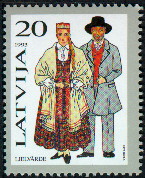 Riga
grew rapidly under Russian rule. By the late 19th century, Riga had
become the Empire's 3rd most important industrial city. The large
number of workers here, together with emerging Latvian nationalistic fervor,
made Riga a city of revolutionary intrigue. Came the First World
War and the defeat of the Russians. Latvia proclaimed independence
in 1918 and freedom came after two years of war, first against Germans
and then against the Bolsheviks.
Riga
grew rapidly under Russian rule. By the late 19th century, Riga had
become the Empire's 3rd most important industrial city. The large
number of workers here, together with emerging Latvian nationalistic fervor,
made Riga a city of revolutionary intrigue. Came the First World
War and the defeat of the Russians. Latvia proclaimed independence
in 1918 and freedom came after two years of war, first against Germans
and then against the Bolsheviks.
During the next 20 years of independence, Latvia enjoyed economic prosperity
and were among the richest European nations during the inter-war period.
However, this golden age was interrupted in 1940 when the Soviets signed
the infamous Molotov-Ribbentrop Treaty with the Nazis and occupied the
country. The struggle for independence was intensified with glasnost
and in 1991, with the collapse of the USSR, they regained independence.
Language Woes and Greek Gods
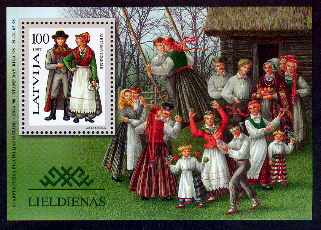 I
landed at about 3:35pm. The passport control, like the one I experienced
in Estonia, was a smooth one. A quick look, some keying of data,
stamping and then a friendly smile "Welcome !". Very civilised indeed.
The Balts have learnt fast the ways of the capitalist world, i.e., making
tourists feel welcomed and they will spend. The airport was very
small and I found myself outside the terminal building the moment I stepped
out of the luggage collection area. Before this, I changed some Latvian
Lats at the passport control area. I wonder how this exchange rate
was set upon independence. One Latvian Lats is equivalent to about
one GBP 1. Maybe the first Latvian central banker is an Anglophile.
The smallest banknote is Ls. 5, and there are coins for pretty hefty sums
like Ls. 1 or 2, in a country where the average monthly salary is US$200.
One has to look after these tiny coins – really small in size compared
to many other countries and yet they can buy you a meal or two.
I
landed at about 3:35pm. The passport control, like the one I experienced
in Estonia, was a smooth one. A quick look, some keying of data,
stamping and then a friendly smile "Welcome !". Very civilised indeed.
The Balts have learnt fast the ways of the capitalist world, i.e., making
tourists feel welcomed and they will spend. The airport was very
small and I found myself outside the terminal building the moment I stepped
out of the luggage collection area. Before this, I changed some Latvian
Lats at the passport control area. I wonder how this exchange rate
was set upon independence. One Latvian Lats is equivalent to about
one GBP 1. Maybe the first Latvian central banker is an Anglophile.
The smallest banknote is Ls. 5, and there are coins for pretty hefty sums
like Ls. 1 or 2, in a country where the average monthly salary is US$200.
One has to look after these tiny coins – really small in size compared
to many other countries and yet they can buy you a meal or two.
 Latvia's
first postage stamp.
Latvia's
first postage stamp.
I waited for quite a while for the bus and only reached the city's centre at 4:15 pm. With a headache, a feverish temperature, slight running nose, fatigue from a late night at work the day before, as well as unexplainable insomnia, it was a rather bad start to this adventure - not to mention an extremely cloudy Riga which I arrived at.
Riga is a city with many English-speaking people. I didn't have
any problems making my way to Patricia, a homestay agency. For US$15,
they arranged for me to stay with a family near the train station, as I
have requested.
 |
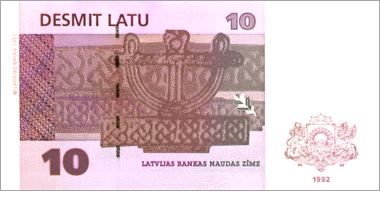 |
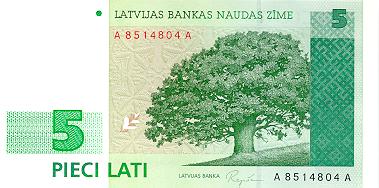 |
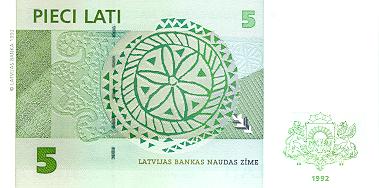 |
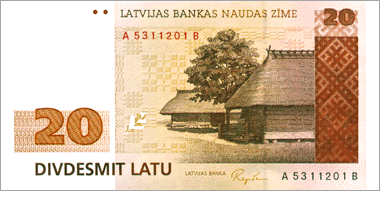 |
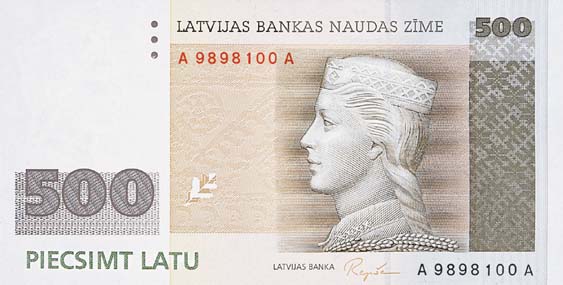 |
I carried my luggage to the home of a Russian family – didn't know they were Russian-speaking at first. That's because only the grandmother, a frail-looking non-English speaking lady in her 60's was at home, and I was not given her name. Knowing the dislike Latvians have for the Russians, I didn't dare greet her with the usual Russian courtesies. I have been told that Latvians hated the Russians so much that they ignored people who try speaking Russians. Not surprising. Upon the occupation of Latvia, a vigorous campaign of Russification began. In 1935, Latvians accounted for 77% of the population and Russian 9%. By 1979, it was 54% Latvian and 33% Russian. With each year, a net average of 11,000 to 15,000 non-Latvian settlers moved to Latvia and this accounted for 60% of the annual population growth. The role of the Latvian language diminished as each year past. The "outsiders" tend to settle in the cities, and as a result, Latvians have become a minority in six of their largest cities. In Riga, Latvians accounted for barely 36% of the population in 1989.
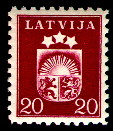 Walking
around Riga, I could hardly feel that this was a Russian-speaking city.
Everything, or almost everything apart from the usual McDonald's signboards,
was in Latvian. Upon independence, all Russian signboards have been replaced.
Yet, this is a city with half or more than half of the population Russian-speaking.
On the streets, I heard Russian spoken. I suppose the young will
have less problem adjusting to the new reality. How about the old
? Like many countries of the FSU which experienced drastic changes
in linguistic policy, large percentage of the population has become functionally
illiterate.
Walking
around Riga, I could hardly feel that this was a Russian-speaking city.
Everything, or almost everything apart from the usual McDonald's signboards,
was in Latvian. Upon independence, all Russian signboards have been replaced.
Yet, this is a city with half or more than half of the population Russian-speaking.
On the streets, I heard Russian spoken. I suppose the young will
have less problem adjusting to the new reality. How about the old
? Like many countries of the FSU which experienced drastic changes
in linguistic policy, large percentage of the population has become functionally
illiterate.
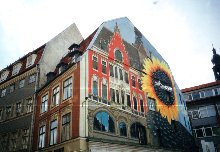 For
the English-speaker, however, getting around Riga is hardly a problem.
Many people, in many cases even the elderly, speak English. In this
aspect, Latvia is similar to Estonia, though very different from the Central
Asian Republics of the FSU. I found the Latvians a warm and friendly
people. I asked for directions and received friendly responses.
For
the English-speaker, however, getting around Riga is hardly a problem.
Many people, in many cases even the elderly, speak English. In this
aspect, Latvia is similar to Estonia, though very different from the Central
Asian Republics of the FSU. I found the Latvians a warm and friendly
people. I asked for directions and received friendly responses.
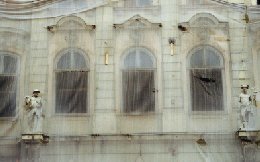 Riga
is a living museum of Jugendstil, or German Art Noveau architecture.
Many buildings in this city were decorated with flamboyant statues of giants,
Greek gods, wild animals and mythological creatures. Amazing place
! This was the legacy of the Baltic Germans, who left Latvia as a
result of the population exchange policy decided between Hitler and Stalin
in 1940.
Riga
is a living museum of Jugendstil, or German Art Noveau architecture.
Many buildings in this city were decorated with flamboyant statues of giants,
Greek gods, wild animals and mythological creatures. Amazing place
! This was the legacy of the Baltic Germans, who left Latvia as a
result of the population exchange policy decided between Hitler and Stalin
in 1940.
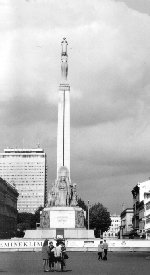 No
visitor to Riga should miss one of the city's symbols - the Brivibas or
Freedom Monument. This tall structure with a goddess holding three
stars each representing a Latvian region was built in 1935 to celebrate
Latvian independence. During the Soviet days, it was officially the
statue of Mother Russia holding her beloved three children – the Baltic
states of Latvia, Lithuania and Estonia. Cutting right across the
monument is the Brivibas iela, one of Riga's main thoroughfares.
Merely a decade ago, it was Lenin Street, and during the years of Nazi
occupation, Adolf-Hitler-Strasse. Like everywhere else, names change
with conquerors.
No
visitor to Riga should miss one of the city's symbols - the Brivibas or
Freedom Monument. This tall structure with a goddess holding three
stars each representing a Latvian region was built in 1935 to celebrate
Latvian independence. During the Soviet days, it was officially the
statue of Mother Russia holding her beloved three children – the Baltic
states of Latvia, Lithuania and Estonia. Cutting right across the
monument is the Brivibas iela, one of Riga's main thoroughfares.
Merely a decade ago, it was Lenin Street, and during the years of Nazi
occupation, Adolf-Hitler-Strasse. Like everywhere else, names change
with conquerors.
I walked around the old town. What a cute little old town with
little alleys and ornate buildings and decorations ! No wonder it
is an UNESCO World Heritage site. But again, the cloudy weather and
my physical state didn't make the experience a pleasant one. After
a rather expensive dinner (about US$17 or Ls. 10) by Baltic standards with
mediocre food at Kalanda (which Lonely Planet described as serving traditional
cuisine at no more than Ls. 5 – avoid unless you have deep pockets !),
I retired early.
| RETURN TO FROM THE BALTIC TO THE BLACK SEA HOMEPAGE |